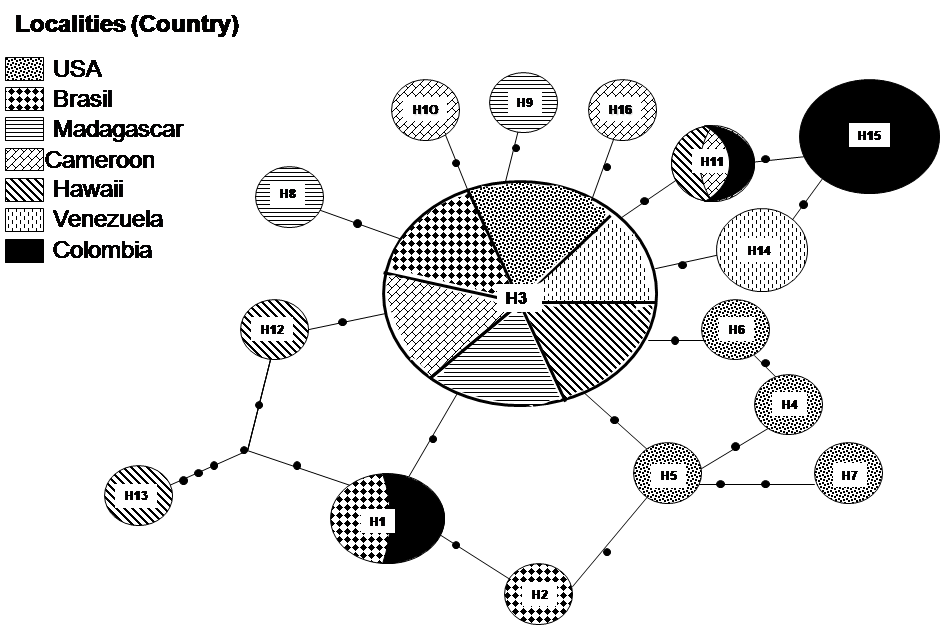Advertisement:
Journal of Entomology and Zoology Studies
Volume 1, Issue 4
Molecular Tracing with Mitochondrial ND5 of the Invasive Mosquito Aedes (Stegomyia) albopictus (Skuse) in Northern South America
Author(s): juan-Carlos Navarro 1*, Loriana Quintero 1, Adriana Zorrilla 1, and Ranulfo González 2
1. Universidad Central de Venezuela, Instituto de Zoología y Ecología Tropical, Lab Biología de Vectores, Apdo 47058, Caracas, Venezuela.
2. Universidad del Valle, Departamento de Biología, Cali, Colombia.
Abstract: The widespread invasive Aedes albopictus, the Asian tiger mosquito, a vector of Dengue, Chikungunya and other arboviruses were discovered in Caracas (Venezuela) in 2009 and, separately in Colombia (Leticia 1998, Buenaventura 2001 and Cali 2007). The possible geographic origins were examined using mtDNA sequences NADH 5 (ND5). Sequences were aligned with those from GenBank. Venezuelan populations contained both unique (H14) and Asian-native haplotypes (H3), while the Colombian populations contain one unique (H15) and two common haplotypes (H1, H11) shared with the Brazilian, Hawaian, and Cameroon populations. Haplotype network analyses suggested: 1) Independent introduction into both countries; 2) two independent invasions into Colombia: from the Amazon River (H1) with evidence of founder effect or genetic bottleneck in Leticia, and, another via the Pacific port of Buenaventura from Hawaii (H11); 3) introduction to Venezuela directly from any Asian native range. Potential factors leading to limited genetic variation in mtND5 in the Columbian and Venezuelan populations were also discussed.
Related graphics:

Download Full Article : Click Here
Advertisement:


